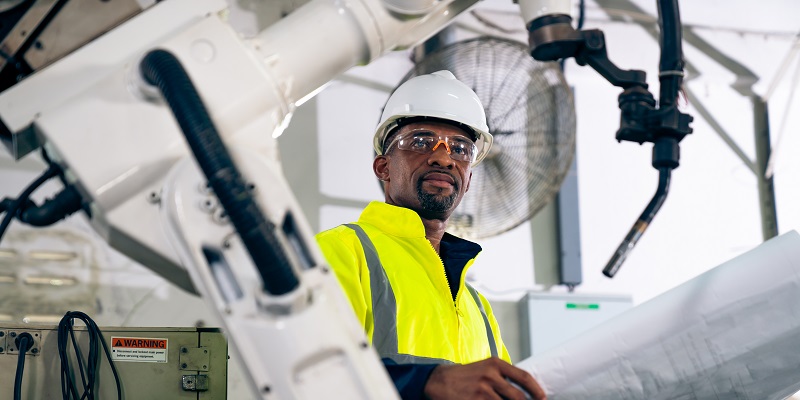Humatics has demonstrated a revolutionary technology called ‘In-Motion’ robotic control, introducing a new level of automation capabilities in the industrial manufacturing market. This technology utilizes Humatics’ Radio Frequency Microlocation technology, which enables the use of robotic systems in automotive moving assembly lines, delivering mission-critical automation and enhancing productivity, quality, and profitability.
Radio Frequency Microlocation Technology
Humatics’ Microlocation technology works by placing transponders in relation to the target work product to enable sub-millimeter precision location of robot arms. This allows the robotic arms to move with real-time, fine-grain control, facilitating in-motion assembly tasks. The Microlocation technology has tremendous benefits that enhance productivity and profitability in assembly lines. Using this technology, robots can work efficiently on various tasks, reducing the time required for completion. The technology also has a positive impact on quality, helping manufacturers maintain high standards by ensuring that the robot arms work within specific tolerances. Finally, implementing Microlocation technology ensures that the manufacturing process is profitable, minimizing the number of errors and reducing downtime.
Concurrent Work by Two Independent Robotic Systems
Micro-location technology can enable two independent robotic systems to work concurrently on an assembly as it traverses an assembly station. This means that the robotic arms can complete multiple tasks at the same time, allowing for faster completion and more efficient production. The sub-millimeter precision provides real-time feedback, allowing the system to manage very complex assemblies.
Advantages in Industrial Manufacturing Environments
Humatics’ Radio Frequency Microlocation technology works ideally for industrial manufacturing environments with varying light conditions, an environment where other location-tracking systems fail. The radio frequency tracks the location of objects even when they are out of sight or in low visibility conditions, enabling effective tracking of workstations. Moreover, the technology ensures that manufacturers can reduce the total time required to complete a task, increasing efficiency and accuracy.
Value of Humatics Microlocation Data
Humatics’ Microlocation technology generates highly valuable data through the use of its patented radio frequency technology. This data can be used for various purposes, including refining manufacturing processes, adjusting workflow, and analyzing manufacturing trends. The data generated by the technology helps increase efficiency and reduce downtime.
Base Station and Transponders
The Humatics base station is located within the assembly station, while the transponders are placed around the factory in relation to the work product. The transponders transmit the location data of the work product to the base station, allowing for the precise control required to direct the respective robot arm.
Benefits for Assembly Productivity and Efficiency
Humatics’ Microlocation technology offers unprecedented real-time precise location data that can be used to increase assembly productivity, improve operational efficiency, and boost the profitability of assembly systems that leverage robotics and assembly tooling. The technology helps manufacturers to achieve high levels of productivity while lowering the cost of production. The precision of the micro-location data ensures that every assembly is accurate while reducing the need for manual intervention.
Collaboration between Robotic Platforms and Operators
Another significant advantage of Humatics’ In-Motion Robotic Control technology is the collaboration it enables between disparate robotic platforms and operators. Different robotic platforms can now work together, perform tasks, and transfer the required knowledge to continue the assembly line effectively. This collaboration ensures that no single robot is overwhelmed or underserved, enabling more efficient production.
Humatics’ In-Motion Robotic Control technology is revolutionizing the industrial manufacturing industry by introducing Microlocation technology. The Microlocation technology embedded in this innovation helps manufacturers improve assembly productivity, increase efficiency, and boost profitability. The use of Microlocation technology has brought new levels of automation to the industrial manufacturing market, providing unparalleled efficiency, accuracy, and profitability. By allowing disparate robotic platforms and operators to work seamlessly together, Humatics is paving the way for widespread collaboration across the manufacturing industry, leading to further innovation and improved productivity.

